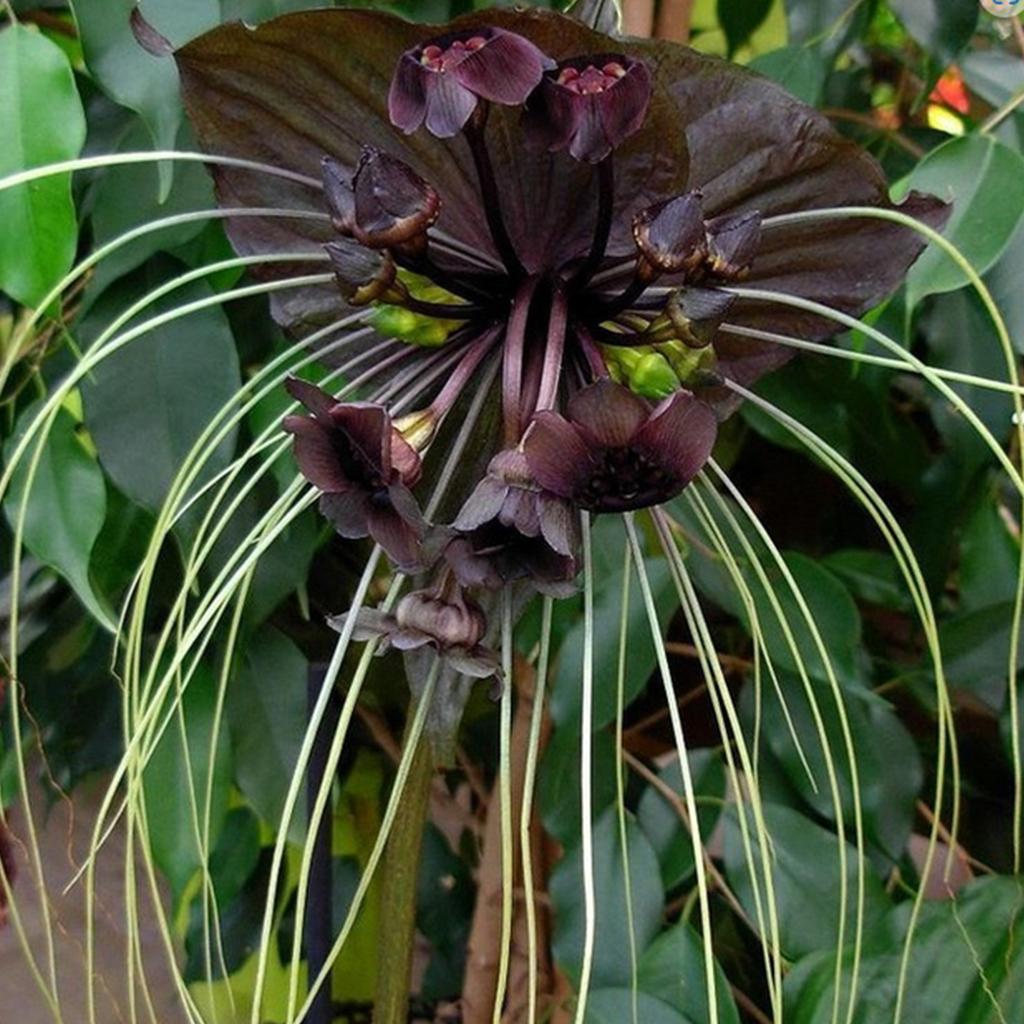For centuries, flowers have been revered as a representation of the natural world’s beauty. Alongside the more common and beloved blooms, Mother Nature continues to create an array of strange and unique flowers that captivate our imagination.

The colossal corpse flower holds the title of being the biggest flower in the world. With a scent that resembles decaying flesh, it attracts its pollinators – dead flies. These unique flowers can be found thriving in the lush province of Sumatra in Indonesia. The largest recorded specimen of this plant weighed a whopping 91kg and stood tall at a height of 3.1m.

Once sea sesame buds are fully open, they resemble lively flowers cheering on the ocean shores of the Pacific and Indian Oceans. Their sweet scent attracts moths and bats to their blossoms.

Heart flowers are often known as “bleeding hearts” in English because of their resemblance to a broken heart dripping with blood. Many myths and legends tie sad love stories to the origins of these flowers. When observed closely, the blooms shine like hearts in the sunlight, but upon closer inspection, they appear like shattered hearts oozing with blood.

The blue tiger claw flower hails from the lush rainforests of the Philippines. This tree boasts a sturdy, long-lasting woody stem and is commonly cultivated as vines on a trellis. Its inflorescences have the impressive capability of growing up to 3 meters in length.

The corpse flower holds the title for being the biggest unisexual flower globally, even though its unfortunate scent resembles that of decaying meat. Lacking both leaves and stems, this unique flower can reach a whopping width of 1 meter. Its natural habitat lies solely on the Southeast Asian islands of Sumatra and Borneo, specifically at altitudes surpassing 1000 meters above sea level.

The pitcher plant, also called the lure-trap flower or the insect-trap flower, is a type of carnivorous plant that can be found in tropical regions. These plants have sweet nectar inside their pitchers that lures insects, and sometimes even small rodents and birds.

The water hyacinth, a member of the flycatcher family, stands out with its unique design. Its flat shape and sticky, glittering feathers resemble fireworks rather than traditional petals. These sparkling features help the flower attract and capture insects as they glisten in the sunlight.

Don’t be deceived by the adorable appearance of the white bunny plant. These rabbit-eared plants may look innocent, but they are actually carnivorous. Often known as “dangerous rabbits,” they lure and consume tiny insects as their prey.

The bat-faced flower, resembling a fierce bat, is originally from Mexico. These flowers stand out with vibrant shades of red and purple and are often referred to as rabbit ears or cigar flowers. Their resilience to tough weather, ability to withstand drought and high temperatures, make them a favorite among hummingbirds, bees, and butterflies due to their striking colors.

Sea holly blooms display deep green petals and shimmering silver sepals along the sandy shores of the English coastline. Their frosty tones set them apart from other flowers found in similar beach settings.

Found near the border of Peru and southeastern Ecuador, the astonishing monkey orchid is scientifically known as Orchis simia. Its petals, sepals, and black markings come together to create the striking image of a monkey, specifically a baboon. Interestingly, each petal emits a fragrance reminiscent of a ripe orange.

The black bat flower is a unique tropical plant found primarily in Southeast Asia. It has earned various spooky nicknames like devil flower, lobster beard flower, and black cat flower.

The parrot beak flower is widely believed to be extinct in its natural habitat, although there are some who still hold out hope for its continued existence. Various attempts have been made to cross-pollinate and reintroduce the flower in the wild, but very few of these efforts have proven to be successful. As a result, parrot beak flowers are now mainly cultivated and reproduced in controlled laboratory settings.

The exotic scent of Parrot flowers can only be experienced in Thailand and Manipur, India. This rare flower is considered endangered and is strictly prohibited from being taken out of its native country.

The ugliest and most isolated tree in the world goes by the name Bach Lan or Gam Angola in Vietnamese. Bach Lan stands out with its ragged, dried-out look, almost as if it’s gradually fading away.

This unique flower features a skull-shaped appearance, transforming from a beautiful and vibrant bloom to a dried form resembling a human skull. It can often be found in various regions across North Africa and Europe.

Named for their resemblance to ducks preparing to take flight, the blooms of flying duck orchids can be found mainly in Australia. Their unique shape makes them easy to pollinate.

The Italica orchid hails from the sunny Mediterranean and thrives in soil that doesn’t have much to offer in terms of nutrients. Because of its distinctive petal shape, this orchid is commonly referred to as the “naked man orchid.”
